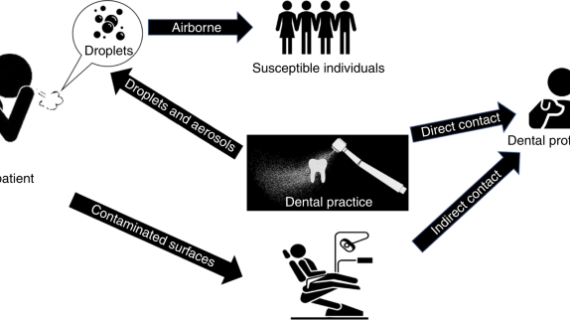Dentist vs Covid-19 | Coronavirus cases in Indonesia have seen a steep rise over the last couple of weeks, leading to school and shop closures and the nation ordered to stay at home. But what should we do if we have a dental emergency? What is considered a dental emergency itself? What should we do if we have some dental issues? Let’s discuss a little about Dentist vs Covid-19.
First, we need to know what is dental emergencies. Dental emergencies are potentially life threatening and require immediate treatment to stop ongoing tissue bleeding, lighten up severe pain or infection, and include:1
- Uncontrolled bleeding
- Cellulitis or a diffuse soft tissue bacterial infection with intra-oral or extra-oral swelling that potentially compromise the patient’s airway
- Trauma involving facial bones, potentially compromising the patient’s airway
Also Read Mobile Dentistry : An Enhancement in Dentistry World
The ADA (American Dental Association) recognizes that members of the public have questions about whether they should continue to visit their dentist during the COVID-19 pandemic. Because the ADA is currently recommending dentists close their offices to all but emergency care, they have provided guidelines to help patients determine when to consult with their dentist as to whether care should be rescheduled. When in doubt, please call your dentist to determine the best course of action. This is some sort of things you can do due to this situation.2
Dental care you can reschedule for another time:1,2
- Regular visits for exams, cleanings, and x-rays
- Regular visits for braces
- Removal of teeth that aren’t painful
- Treatment of cavities that aren’t painful
- Tooth whitening
- Aesthetic dental procedures
Dental care that you should have taken care of by a dentist at this time:1,2
- Bleeding that doesn’t stop
- Painful swelling in or around your mouth
- Pain in a tooth, teeth or jaw bone
- Gum infection with pain or swelling
- After surgery treatment (dressing change, stitch removal)
- Broken or knocked out tooth
- Denture adjustment for people receiving radiation or other treatment for cancer
- Snipping or adjusting wire of braces that hurts your cheek or gums
- Biopsy of abnormal tissue
In this situation, many dentists have turned to telemedicine to counsel patients by phone or video conferencing. Unless someone in extreme pain or swollen or some condition that already mentioned above, first try to contact (by phone or other media) with your dentist, as they may be able to give you a prescription or refer you to the appropriate provider. Or if they can treat it immediately, they will prepare the clinic first to prevent infection transmitted during procedures.3,4
Dentists face one of the highest risks of contracting coronavirus, even greater than doctors, nurse or paramedics, clinical care workers, food delivery boys, janitors, pilots, flight attendants, barbers and maids. According to medical research reports, dentists are eight times more at risk of contracting COVID-19 infections. The American Dental Association has cautioned all dentists of their risk of exposure as they deal with the oral cavity, which is one of the easiest routes to infection due to the presence of saliva and other secretions.4,5
So, it would be wise to postponed your appointment to dentist if it’s not urgent and if you feel sick. If you have dental issues, try contact your dentist first then ask what is the best solution of your condition. Taking care of your daily oral health is the best to do during this moment. Stay safe and healthy. See you again.
References
- https://success.ada.org/~/media/CPS/Files/Open%20Files/ADA_COVID19_Dental_Emergency_DDS.pdf?utm_source=adaorg&utm_medium=covid-resources-lp&utm_content=cv-pm-emerg-def&utm_campaign=covid-19&_ga=2.228427101.1788064760.1585965959-393050213.1585965959
- https://www.ada.org/~/media//CPS/Files/COVID/ADA_DentalEmerg_Patient_Flyer.pdf?utm_source=adaorg&utm_medium=covid-resources-lp&utm_content=cv-pm-emerg-def-patients&utm_campaign=covid-19
- https://www.healthline.com/health-news/how-to-keep-your-teeth-healthy-if-your-dentist-office-is-closed#Dental-care-emergencies-only
- https://gulfnews.com/uae/health/coronavirus-how-dentists-at-high-risk-of-exposure-operate-in-uae-1.70770362
- https://www.zerodonto.com/en/2020/03/covid-19-dentistry-new-coronavirus/

